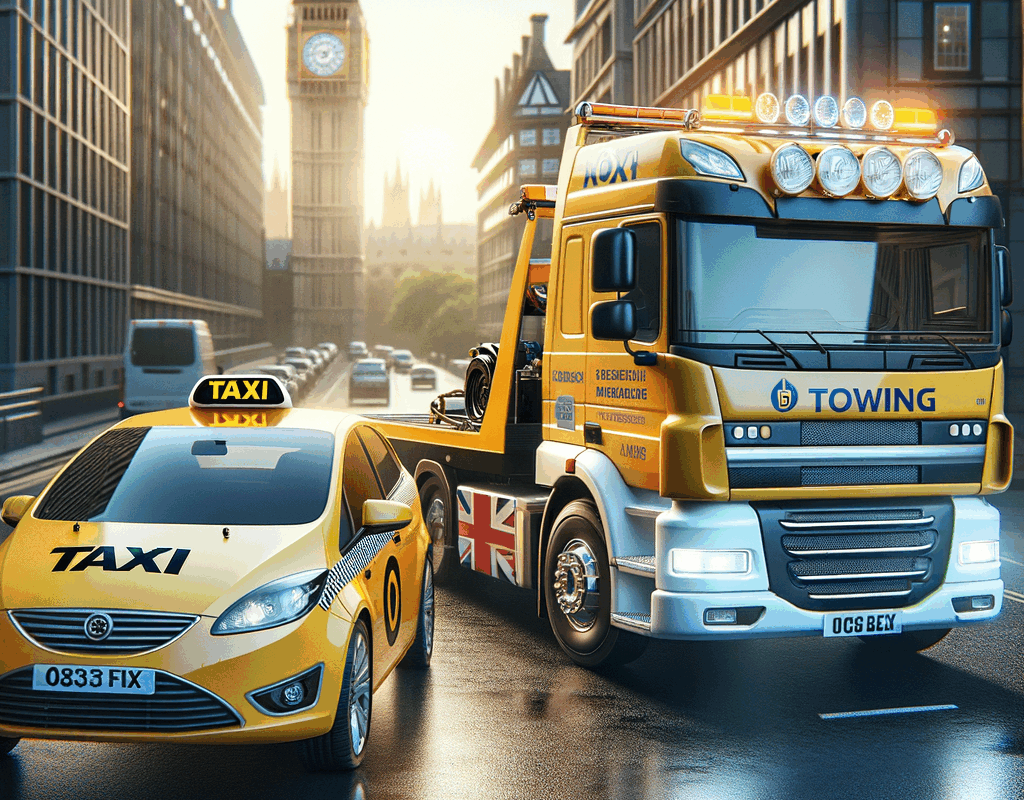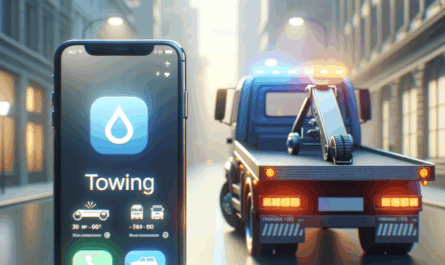When you’re late for a meeting or stranded with a flat battery, the last thing you want is juggling apps. The Crisfix – Taxi and Towing app in UK streamlines two essential services—on-demand taxis and trustworthy towing—into one simple experience.
How the Crisfix – Taxi and Towing app in UK works
In this guide, you’ll learn how it works, when to choose a ride versus a recovery, what to expect on pricing and response times, and how to stay safe and prepared on UK roads. Along the way, you’ll get practical tips, common pitfalls to avoid, and expert best practices so you can move from problem to solution in minutes.
Two solutions, one app
Booking a taxi in seconds
– Set your pickup and destination, then view vehicle options with estimated arrival times.
– Compare fares before you book, with clear `ETA` and route previews.
– Save frequent places—home, office, station—for faster checkout next time.
> Pro tip: Request your ride from a well-lit, easy-to-spot location to reduce wait times and missed pickups.
Requesting a tow or roadside recovery
– Describe the issue (e.g., no start, puncture, lockout) and your vehicle type.
– Share your precise location using GPS; add landmarks if you’re off a main road.
– See an upfront estimate based on distance, time of day, and service type (tow, jump-start, tyre help).
Real-time tracking, communication, and ETAs
– Track your driver or recovery truck on the map and watch the route update in real time.
– Message the provider in-app to share extra details, photos, or safe-stop instructions.
– Receive `ETA` updates if traffic or roadworks affect the journey.
Payments, receipts, and records
– Pay securely in-app and store itemised receipts for expenses or insurance claims.
– Save payment methods, enable two-factor authentication, and export trip histories when needed.
When to choose taxi vs towing: real-world scenarios
Case study: Late-night city ride
Priya finishes a shift in Manchester at 11:30 pm. Buses are infrequent, and walking would take 40 minutes. She books a standard saloon via the app, checks the registration in-app against the vehicle plate, and shares her trip with a trusted contact. She’s home by midnight with a digital receipt for expenses.
Case study: Motorway breakdown
Liam’s car loses power on the M1. He exits to a refuge area, switches on hazard lights, and stands behind the barrier. He requests a tow through the app, enters his make and model, and notes he’s in a refuge bay. The provider arrives with the right equipment for an automatic transmission, minimising delays.
For safety guidance on fast roads, see the National Highways advice in the UK: [National Highways breakdown guidance](https://www.nationalhighways.co.uk/road-safety/breakdowns/).
Case study: Rural roadside rescue
Aisyah gets a puncture on a B-road in Cornwall with limited signal. The app caches her request and submits it when the signal returns. She includes a photo of her tyre size and wheel-lock key location. The recovery operator brings the correct tools, saving a second call-out.
Accessibility and special requests
– Add notes for child seats, extra luggage, or foldable wheelchairs.
– For towing, specify lowered suspension, EV/hybrid, or 4×4 so the right kit is dispatched.
– If you need a quiet pickup for a residential street, note that in the booking.
Safety, compliance, and data privacy in UK mobility
Licensed drivers and vehicle standards
In the UK, taxi and private hire services operate under local council licensing. Check that your provider uses licensed drivers and vehicles that meet council standards. For context on the regulatory landscape, see the [Department for Transport taxi and PHV statistics](https://www.gov.uk/government/collections/taxi-and-private-hire-vehicle-statistics).
– Verify the plate number and driver details in-app before boarding.
– Use the app’s safety features: trip sharing, in-app support, and anti-fraud checks.
Insurance and recovery operator accreditation
– Reputable recovery operators carry road risk and public liability insurance.
– Specialist vehicles (e.g., EVs or AWD) may require compliant equipment such as flatbeds or tilt-and-slides.
– Keep a record of the operator’s company name, vehicle registration, and any damage notes.
Please have a look on this link if you want see an article about Towing App in Sussex, or this article about Towing App in Cardiff.
Data protection and `GDPR`
A mobility app handles sensitive data: location, payment details, and journey history. Look for:
– Clear privacy notices and lawful bases under `GDPR` Article 6.
– Data minimisation and secure storage for payments and IDs.
– User controls to delete accounts, export data, or manage marketing preferences.
For more on UK data standards, consult the [ICO’s UK GDPR guidance](https://ico.org.uk/for-organisations/uk-gdpr-guidance-and-resources/).
Personal safety tips that work
– Confirm the car registration and driver name before entering.
– Sit in the back seat on solo rides, and keep your bag within reach.
– On fast roads, stand well away from traffic—preferably behind barriers, up the embankment.
– If you feel unsafe, end the trip request and contact in-app support or emergency services.
> Safety insight: On motorways, waiting behind the barrier reduces the risk of secondary collisions. Your phone and the app can provide updates; you don’t need to stand near the vehicle.
Pricing, coverage, and response times
Transparent fares and tow quotes
With dual services in one place, you want clarity:
– Taxi fares typically vary by distance, time of day, and local tariffs.
– Recovery quotes depend on location (on-road vs off-road), vehicle type, and tow distance.
– Expect separate line items for call-out, per-mile towing, and specialist equipment if required.
What affects cost
– Time of day: Night and peak hours may include surcharges.
– Vehicle class: MPVs, executive cars, or EV-compatible recovery can cost more.
– Traffic and access: City-centre congestion or rural tracks can extend time on site.
Coverage areas and demand patterns
– Urban cores often have shorter ETAs; rural or coastal regions may take longer.
– Weather events and major stadium or airport traffic can temporarily raise demand.
– Planning a tow to a preferred garage? Confirm their opening hours to avoid storage fees.
For general towing rules and safe limits, see the UK resource on [towing and recovery basics](https://www.gov.uk/towing).
Response time expectations—and how to improve them
– Provide precise GPS location plus a landmark.
– Add clear notes: vehicle condition, tyre sizes, and gearbox type.
– Stay reachable; answer calls from unknown numbers during your booking window.
– Keep the scene safe and accessible (e.g., wheels straight, hazards on, documents ready).
Tips, best practices, and mistakes to avoid
Quick pre-ride checklist
– Battery above 10%, charger packed, volume up.
– Check the car registration against the app before boarding.
– Share trip progress with a trusted contact.
Before the tow truck arrives
– Move to a safe place; wear a high-vis vest if you have one.
– Gather essentials: keys, documents, valuables, medication.
– Photograph the vehicle’s condition for your records.
Common mistakes to avoid
– Vague location descriptions leading to delays.
– Not mentioning special requirements (e.g., performance cars with low clearance).
– Cancelling late—this can incur fees and slow future service.
Save time with in-app features
– Use saved locations and favourite providers where available.
– Enable trip sharing and SOS features for layered safety.
– Keep your profile details updated—vehicle info, payment method, and emergency contacts.
Practical scenarios and metrics that matter
Example: Commuter efficiency
A weekly taxi to the train station becomes predictable when you:
1. Schedule rides during off-peak times.
2. Set a pickup spot that avoids roadworks.
3. Track `ETA` and adjust departure if delays occur.
Example: Fleet and family use
– Family accounts can store multiple payment methods and addresses.
– Fleet users can export ride and tow histories for audits and HMRC mileage claims.
What to log after each service
– Provider details, timestamps, odometer readings (for tows).
– Receipts and any damage notes.
– Notes about access or directions that worked well for next time.
For broader context on licensing and regulatory updates, review the [Department for Transport’s guidance hub](https://www.gov.uk/government/organisations/department-for-transport).
Conclusion: One app, fewer headaches
The core value is simplicity: one interface for rides and recovery, clear pricing, real-time tracking, and solid safety features. Use precise locations, detailed notes, and in-app communication to reduce delays and costs. Keep your data tidy—receipts, histories, and vehicle details—so future bookings take seconds, not minutes. Ready to streamline your travel and roadside moments? Download and set up the Crisfix – Taxi and Towing in UK app today, then add your essential details so it’s there when you need it most.
FAQ
**Q: How is this different from using separate taxi and breakdown apps?**
A: It unifies booking, tracking, and payments. You reduce app switching, keep a single audit trail for rides and tows, and standardise safety features like trip sharing.
**Q: What details help me get the right tow first time?**
A: Include your exact location, vehicle make/model, fuel type or EV status, gearbox type, tyre size, and any special clearance issues. Add photos when safe.
**Q: Are drivers and recovery operators licensed and insured?**
A: Taxi and PHV drivers should be locally licensed and insured. Recovery operators typically carry road risk and public liability insurance; confirm details in-app or on arrival.
**Q: Can I schedule services in advance?**
A: Many providers support pre-booking for early flights, events, or planned garage visits. Advance notice can reduce costs and improve punctuality.
**Q: What if I have limited signal?**
A: The app may cache your request and send it once the signal returns. If you’re on a motorway, prioritise safety first and follow National Highways guidance while you wait.
—
Sources for further reading:
– [Department for Transport taxi and PHV statistics and guidance](https://www.gov.uk/government/collections/taxi-and-private-hire-vehicle-statistics)
– [National Highways breakdown safety advice](https://www.nationalhighways.co.uk/road-safety/breakdowns/)
– [GOV.UK towing and recovery basics](https://www.gov.uk/towing)
– [ICO guide to UK GDPR](https://ico.org.uk/for-organisations/uk-gdpr-guidance-and-resources/)





